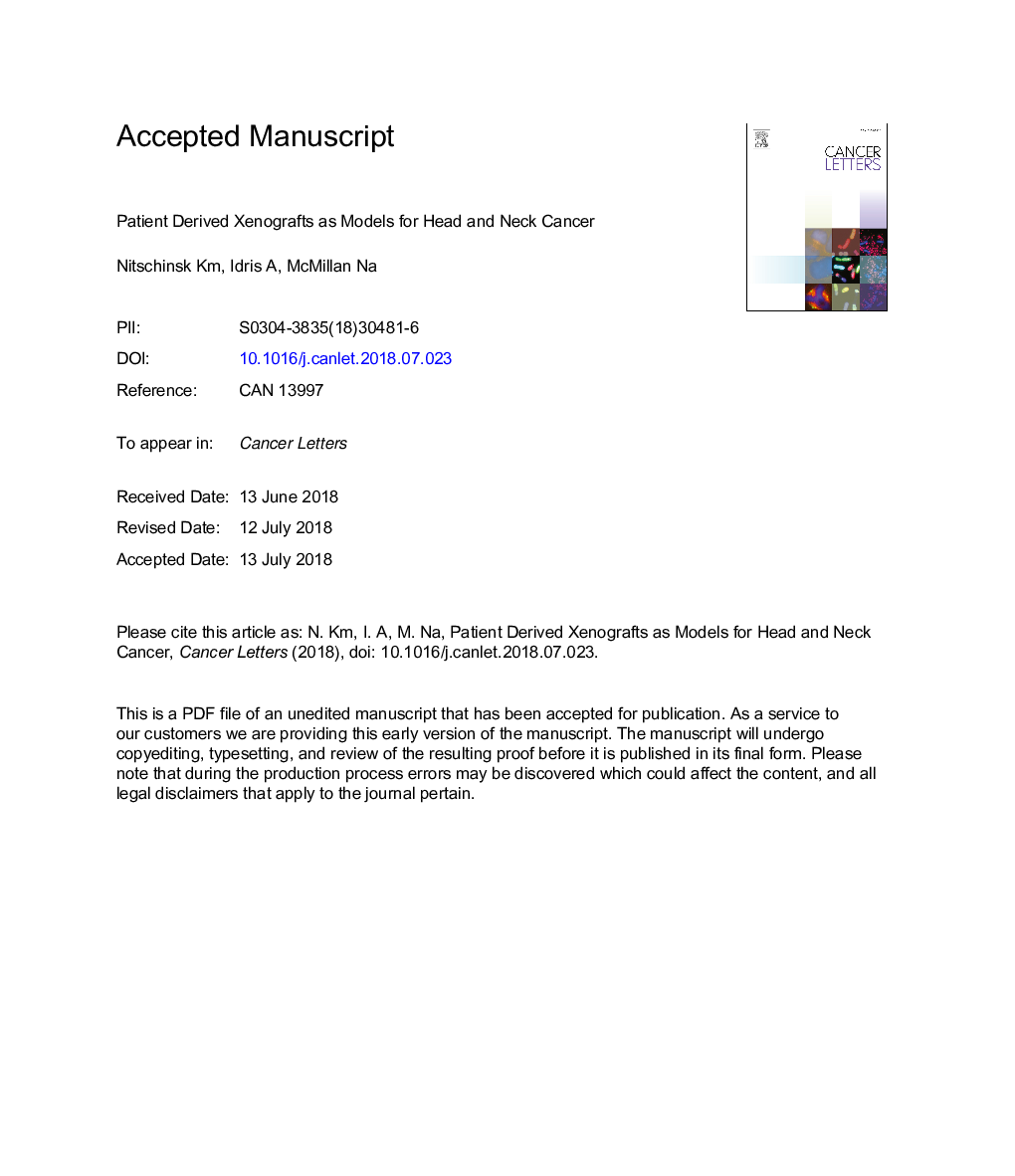| Article ID | Journal | Published Year | Pages | File Type |
|---|---|---|---|---|
| 8434099 | Cancer Letters | 2018 | 22 Pages |
Abstract
Translational cancer research has benefitted significantly from the generation of preclinical models that recapitulate the native tumour environment. While conventional cell models have contributed substantially to the current understanding of cancer biology and therapeutic development, a missing link between cell culture and their clinical applications is evident. Patient derived xenograft (PDX) models represent this missing link as they enable the examination of patient tumour tissue in a native environment without significantly affecting the cellular complexity, genomics, and stromal architecture of the neoplasms. The use of PDXs to model head and neck cancer (HNC) begets the development of novel therapeutics, increased understanding of tumorigenesis and the advent of personalised treatments cancer patients. There has been an increase in attempts to generate viable PDXs for HNCs in recent years. This concise review summarizes the current developments in the field of PDXs for HNCs.
Related Topics
Life Sciences
Biochemistry, Genetics and Molecular Biology
Cancer Research
Authors
Km Nitschinsk, A. Idris, Na McMillan,
